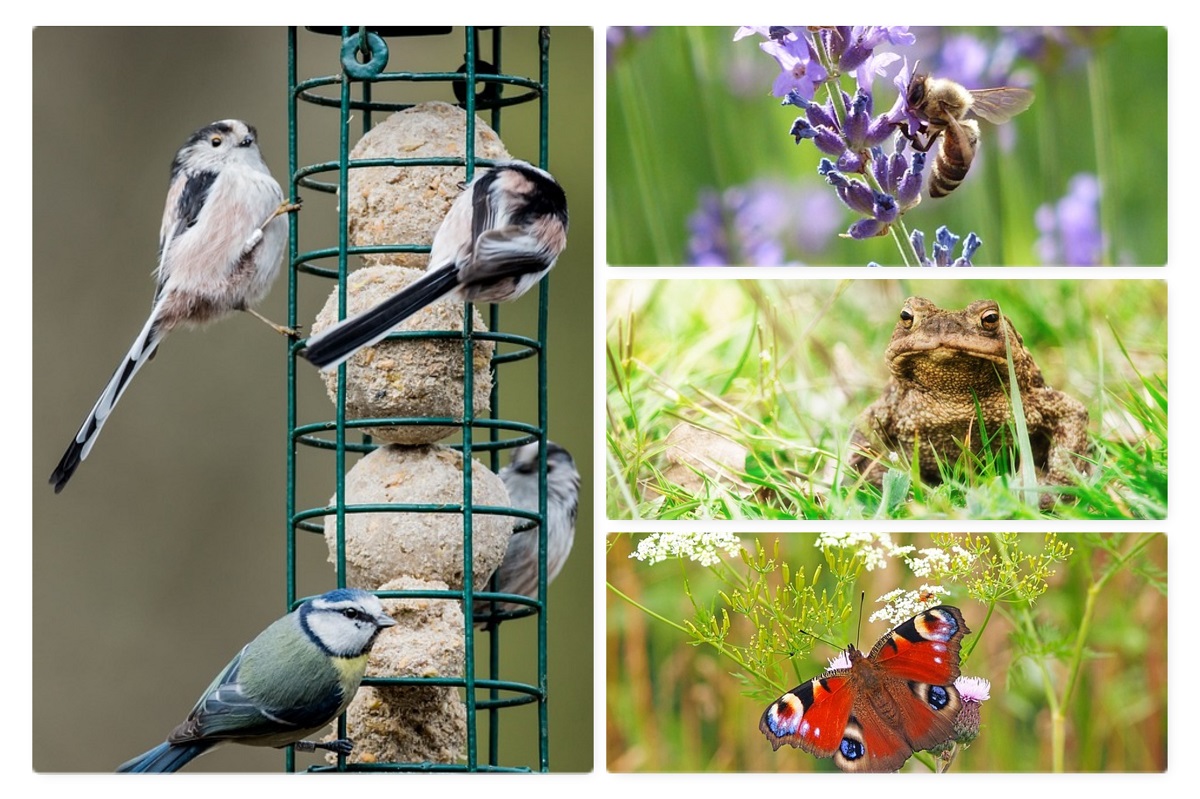May 26th 2023
How to attract more wildlife in to your garden

Having a garden is a wonderful way to connect with nature and enjoy the outdoors, and many people are always looking for more ways to attract wildlife to their garden. Attracting wildlife to your garden can be a fulfilling and rewarding experience. Not only does it enhance the beauty of your outdoor space, but it also contributes to the local ecosystem by providing a safe haven for various creatures.
However, some gardening trends can discourage wildlife and even harm them. Just a few small changes could support the environment. If you want to create a place, no matter how small where nature can thrive.
From 5th – 11th June is Garden Wild Life Week, so here are a few very simple tips on how to attract more wildlife into your garden.
Plant native plants
Native plants are those that are naturally found in the UK, and they provide the best habitat and food sources for local wildlife. By planting native flowers, shrubs, and trees, you can attract a wide range of insects, birds, and other animals to your garden. Some examples of native plants that are great for wildlife include foxgloves, lavender, and heather. For more examples visit www.gardenersworld.com.
Incorporating butterfly and bee-friendly plants
Butterflies and bees are crucial pollinators that help in the reproduction of flowering plants. To invite them into your garden, plant a variety of nectar-rich flowers that bloom throughout the seasons, providing a continuous food source for butterflies and bees, such as lavender, marigolds, coneflowers, and buddleia (also known as butterfly bush). These plants not only offer a delightful feast for butterflies and bees but also add vibrant colours to your garden. Additionally, consider including host plants for butterflies, where they lay their eggs and provide food for caterpillars. Milkweed, for example, is a host plant for monarch butterflies. By creating a pollinator paradise with a diverse array of blooming plants, you’ll support these beneficial insects and witness the beauty of their visits.
Let it grow wild
Embracing the concept of letting your garden grow wild can have numerous benefits when trying to attract wildlife into your garden. Instead of meticulously manicuring every corner, designate specific areas where nature can take its course. Let grasses grow tall, allow wildflowers to bloom, and refrain from removing fallen leaves or cutting down dead trees. These untamed spaces provide essential shelter, hiding places, and nesting opportunities for insects, small mammals, and birds. They also attract pollinators like bees and butterflies, as well as beneficial predators that help control pests. By embracing natural wilderness, you create a microcosm of biodiversity within your garden, fostering a harmonious ecosystem that supports the life cycles and habitats of various wildlife species.

Provide water
Water is an essential element for attracting wildlife into your garden, especially during the summer months when natural water sources can dry up. By providing a water source in your garden, such as a bird bath or small pond, you can attract a variety of birds, insects, and other animals. Make sure to keep the water clean and fresh, and consider adding a small pump to keep the water moving.
A wildlife pond can transform your garden into a thriving ecosystem, attracting an array of wildlife to your garden. Choose a suitable location, ensuring it receives a mix of sunlight and shade throughout the day. Dig a shallow section to accommodate marginal plants and a deeper area to allow for aquatic life. Incorporate a variety of aquatic plants such as water lilies, iris, and submerged plants to provide cover and food sources. Introduce native fish, if appropriate, and provide gentle sloping edges to allow creatures to enter and exit the pond easily. Remember to maintain the water quality and ensure the pond doesn’t become stagnant by adding a small pump or considering a natural filtration system. A well-designed wildlife pond will not only provide a water source but also become a mesmerizing focal point, attracting a plethora of fascinating creatures to your garden.
Creating nesting spaces for birds and animals
Wildlife needs shelter to protect them from predators and bad weather. You can create shelter in your garden by planting shrubs, trees, and hedges, or by building a bird box or hedgehog house. You can also leave areas of your garden wild and untamed, as this provides a natural habitat for wildlife.
Providing suitable nesting spaces for birds can significantly contribute to attracting a diverse range of avian visitors to your garden. Consider building birdhouses and nesting boxes using materials like wood or recycled materials, you can even re-purpose old items like teapots and buckets. Place them strategically around your garden, ensuring they are elevated and protected from predators. Varying the heights around your garden, such as on trees, fence posts, or dedicated stands. Different bird species have specific preferences for nesting spaces, so research the nesting habits of different bird species in your area to determine the appropriate dimensions and entry hole sizes for the birdhouses. By offering these inviting nesting spots, you’ll increase the likelihood of birds making your garden their permanent residence. to maximize your chances of attracting a variety of feathered friends.
Provide food
Creating a feeding station in your garden is an effective way to entice wildlife and provide them with a much-needed food source. Install bird feeders in various locations, offering a variety of seeds and nuts to cater to different bird species. Hang up fat balls, which are high-energy treats, to attract birds such as tits and finches. Opt for feeders that protect the food from the elements and deter larger animals. Additionally, planting fruit and berry bushes, such as blackberries or raspberries, provides natural food sources for birds and other animals. Remember to monitor and replenish the feeders regularly to ensure a constant supply of food. By establishing a welcoming feeding station, you’ll create a reliable food hub that supports the well-being and sustenance of the wildlife visiting your garden.
Avoid using chemicals
Choosing natural pest control methods over chemicals is essential for the well-being of wildlife in your garden. Rather than relying on pesticides and herbicides, embrace alternative approaches to manage pests and maintain a harmonious ecosystem. Companion planting is a valuable technique where certain plants are grown together to deter pests or attract beneficial insects that prey on them. For instance, marigolds can repel aphids, while planting herbs like basil and mint can deter pests like mosquitoes. Introduce natural predators such as ladybugs, lacewings, or birds that feed on pests. Implementing proper garden hygiene, such as removing diseased plants and regularly cleaning up fallen fruits or vegetables, can help prevent pest infestations. By avoiding the use of chemicals, you create a safe haven for wildlife in your garden, preserving their habitats and ensuring a healthier and more sustainable garden environment.
By following these tips, you can create a garden that is a haven for wildlife. Not only will you be helping to protect local species, but you’ll also be able to enjoy watching them in their natural habitat. So why not get started today and see what creatures and wildlife you can attract to your garden?



 Customer Portal
Customer Portal


